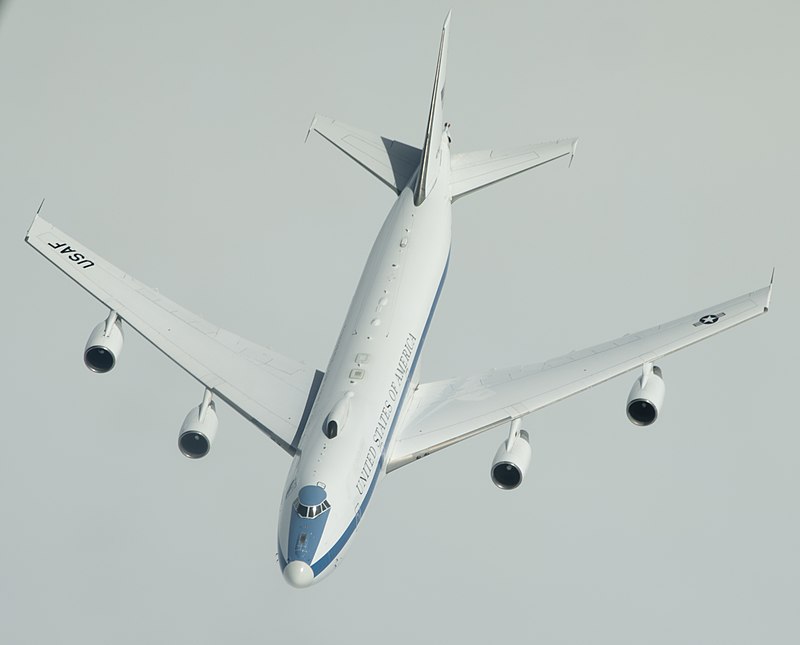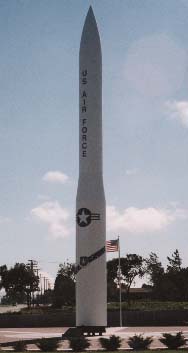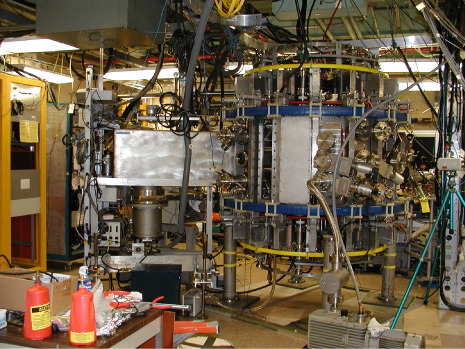Blog
-

Geiger Readings for May 30, 2019
Ambient office = 43 nanosieverts per hour
Ambient outside = 49 nanosieverts per hour
Soil exposed to rain water = 50 nanosieverts per hour
Carrot from Central Market = 93 nanosieverts per hour
Tap water = 106 nanosieverts per hour
Filtered water = 93 nanosieverts per hour
-

1884 – Nuclear Weapons 684 – The E-4B Is A Flying Pentagon In Case Of Nuclear Attack
Air Force One is well known as the plane that carries the U.S. President. Much less publicized is the U.S. Air Force E-4B, intended to carry the U.S. Secretary of Defense and other federal officials in case of a nuclear attack. The E-4B is a heavily modified Boeing 747 known as the “doomsday plane.” It stands six stories high, is powered by four huge engines and is able to endure the immediate aftermath of a nuclear explosion. It is considered to be a “backup Pentagon”. There are four identical copies of the E-4B, one of which is ready to fly twenty-four hours a day and seven days a week. The four E-4Bs are operated by the 1st Airborne Command and Control Squadron of the 595th Command and Control Group located at Offutt Air Force Base, near Omaha, Nebraska.
The E-4B is also known as the National Airborne Operations Center. The plane is basically a flying command center. The Secretary of Defense has access to all unclassified and classified communication systems and is never out of touch with the national defense command systems. There is a big hump on the top of the E-4B which is called the “ray dome.” It contains sixty-seven satellite dishes and antennas. The dome is one component of the E-4B communication system that gives the Secretary of Defense the ability to make contact with U.S. ships, submarines, aircraft and landlines anywhere around the globe.
The E-4B has huge fuel tanks and can refuel in flight which will allow it to stay in the air for up to a week if necessary. The plane has three decks and can carry up to one hundred and twelve people. It contains eighteen bunks, six bathrooms, a galley, briefing room, conference room, battle staff work area and executive quarters. The E-4B is built for utility and is almost windowless. The plane’s electronics and flight instruments are antiquated.
A crew member explained that “It’s a common misconception, but this plane doesn’t have digital touch screens in the cockpit or elsewhere. The conditions that this plane is meant to fly in call for analog, since digital tech would fry during a nuclear war.” The analog technology on the E-4B is not as vulnerable to an electromagnetic pulse following a nuclear blast as is digital technology. The E-4B has state of the art direct fire countermeasures.
In January of 2006, Secretary of Defense Donald Rumsfeld announced that the entire E-4B fleet was going to be retired starting in 2009. This was reduced to retiring one of the E-4B planes in early 2009. This order was reversed in 2-007 by the new Secretary of Defense, Robert Gates. This action was taken with the cancellation of the E-10 MC2A program which was going to replace the E-8 series. The 2015 budget contained no plan to retire the E-4Bs. Since then, it has been announced that the end of the service life of the current fleet of E-4B will be sometime in 2039.
-
Nuclear News Roundup May 29, 2019
-

Geiger Readings for May 29, 2019
Ambient office = 105 nanosieverts per hour
Ambient outside = 136 nanosieverts per hour
Soil exposed to rain water = 136 nanosieverts per hour
Beefsteak tomato from Central Market = 122 nanosieverts per hour
Tap water = 71 nanosieverts per hour
Filtered water = 59 nanosieverts per hour
-

Nuclear Weapons 683 – Maybe It Is Time To Retire The U.S. Land-based Intercontinental Ballistic Missiles
The nuclear triad is a term that refers to the three different nuclear weapons delivery systems that protect the U.S. They are the strategic bombers, the nuclear submarines and the intercontinental ballistic missiles stationed in the Midwest. The first two are well maintained and highly respected postings. The third is deteriorating and the morale is low. Being located in the remotest parts of Montana, North Dakota, Wyoming, South Dakota, and Missouri does not help morale.
The LGM-Minuteman is the only land based ICBM in the U.S. arsenal. These were deployed in the 1970s. Each missile can carry up to three nuclear warheads. Initially, the warheads had a one hundred and seventy kiloton yield. In the first decade of deployment, there were one thousand of these in silos in the five states. Now there are about four hundred deployed as a result of nuclear weapons reduction treaties. The Air Force wants to keep these missiles in service until 2030.
Years ago, there was a segment on 60 Minutes that showed antiquated computer equipment and a massive blast door in one of the missile silos that had jammed in a partly open position and could not be closed to protect the personnel in the silo in case of launch.
The launch process for the Minutemen is complex. The silo crews are supposed to be tested monthly to be sure they know what to do to properly launch the missiles. A few years ago, there was a scandal when it was discovered that the silo crews had been cheating on the monthly testing and selling tests and answers to each other. In addition to the cheating scandal, it was also found that illegal drugs were being sold, bought and consumed by some of the silo crews.
This week, there were Facebook postings that mentioned that three airmen in a missile maintenance group were consuming beer during a regular nuclear code change. Apparently, this is not a novel occurrence and there are Internet memes circulating about the consumption of alcoholic beverages at the base. The operations chief for the maintenance group said that the airmen were off duty and did not have access to weapons or launch controls while they were drinking.
I recently wrote a post in which I reported on a recommendation that the ICBM leg of the nuclear triad be eliminated. The bombers and submarines are sufficient to delivery a deadly blow to any enemy which attacks the U.S. with nuclear weapons. Having a bunch of missiles in hardened silos in the center of the country invites any enemy carrying out a nuclear attack to send hundreds of missiles at the Minutemen silo fields which would devastate and irradiate a huge area east of the Rocky Mountains.
The ICBM are the least important part of the U.S. retaliatory capacity and they are the most exposed and inviting targets for any enemy staging a nuclear attack. They are poorly maintained, the silo crews have low morale, the training system is breaking down and the silo crews are getting drunk and using illegal drugs. Perhaps it would be better to retire them and save the money. -
Nuclear News Roundup May 28, 2019
High radiation levels found in giant clams near U.S. nuclear dump in Marshall Islands latimes.com
Iran will not negotiate with the United States over its nuclear and missile programs, Supreme Leader Ayatollah Ali Khamenei said on Wednesday, after President Hassan Rouhani signalled talks with Washington might be possible if sanctions were lifted. Nytiomes.com
Trump says Iran nuclear deal possible as sanctions sting jpost.com
A partnership between Canada’s Nuclear Waste Management Organisation (NWMO) and Ocean Networks Canada has carried out its first six-month underwater experiment to better understand the behaviour of elements of the engineered-barrier system it plans to use in a deep geological repository. Ocean Networks Canada is an oceanographic research and monitoring arm of the University of Victoria. World-nuclear-news.org
-

Geiger Readings for May 28, 2019
Ambient office = 100 nanosieverts per hour
Ambient outside = 140 nanosieverts per hour
Soil exposed to rain water = 139 nanosieverts per hour
Bartlett pear from Central Market = 91 nanosieverts per hour
Tap water = 136 nanosieverts per hour
Filtered water = 122 nanosieverts per hour
-

Nuclear Fusion 57 – Lithium Can Improve Tokamak Fusion Reactor Performance
This blog is usually about nuclear fission because there have been nuclear reactors and nuclear weapons for decades. I sometimes write about nuclear fusion because it would be a better way to generate electricity if it can be perfected. Here is another piece of the puzzle.
Tokamak fusion reactors are donut-shaped vessels in which powerful magnetic fields confine and heat plasmas in the center of the vessel. One of the problems with tokamak fusion reactors is the fact the if the plasma escapes confinement of the magnetic fields, it can impinge on the sides of the tokamak. This can result in quenching of the fusion reaction at the very least and actual physical damage to the walls of the tokamak at the worst.
Lithium is a very light metal that has many industrial and consumer uses. One of the main uses is in highly efficient batteries. Lithium can be used inside a tokamak to protect the walls from escaping plasma. It can also be used to produce tritium. Tritium can be combined with deuterium to produce the fusion reaction.
At the U.S. Department of Energy’s (DOE) Princeton Plasma Physics Laboratory (PPPL), researchers have spent three years upgrading the Lithium Tokamak Experiment to the Lithium Tokamak Experiment-Beta (LTX-β). This is a device that will be able to test the ability of lithium to protect the walls of a tokamak.
During the upgrade, the researchers installed a neutral beam injector which they borrowed from TAE Technologies. They also increased the power of the magnetic field that confines the plasma. And they installed new lithium systems. These changes were made to bring the device closer to the design of an actual fusion reactor.
The device has a coating of lithium that covers the interior walls of the small tokamak. The first significant accomplishment of the device before the upgrade was to maintain a constant temperature in the plasma from the center of the confinement to the outer edge.
Completing the upgrade allowed the device to produce five hundred kilowatts of neutral beam power. It also increased the strength of the magnetic confinement by two thirds. The lithium coating on the interior walls absorbs stray particles of plasma and prevents them from rebounding into and cooling the confined plasma. Subsequent to the original upgrade, the researchers increased the neutral beam power to over six hundred watts. They also increased the heating power of the device by a factor of ten.
The next test that will be carried out will determine in the device can maintain good confinement and constant temperatures in much hotter plasmas with more powerful magnetic fields. The beam upgrade will prevent the density of the plasma from dropping and will also demonstrate whether or not hotter and more energetic plasmas can be properly controlled to sustain the fusion reaction.
During the upgrade, the research team had to install a much stronger power supply and a new lithium evaporator. Dick Majeski is the principal investigator of the experiment. He said, “Everyone worked very hard. We got a lot of help from the laboratory’s NSTX-U [National Spherical Torus Experiment-Upgrade] engineering team.
The collaboration which carried out the upgrade consisted of scientists from eight major research centers across the U.S. including Oak Ridge and Lawrence Livermore National Laboratories; Princeton University; University of California, Los Angeles; University of Wisconsin-Madison; University of Washington; and University of Tennessee, Knoxville. -
Nuclear News Roundup May 27, 2019
Nuclear power decline ‘would lead to increased emissions’: IEA power-technology.com
Open Hatch Nearly Sunk India’s New $3 Billion Nuclear Missile Submarine nationalinterest.org
Researchers at the Lawrence Livermore National Laboratory and Sandia National Laboratories, in partnership with UC Berkeley, have developed a new online game to study military escalation after receiving a $500,000 grant from the Carnegie Corporation of New York. Dailycal.org
Russia has secretly conducted low-yield nuclear tests of some undetermined magnitude in an effort to upgrade its nuclear arsenal, according to a new U.S. intelligence assessment. Thedailybeast.com
